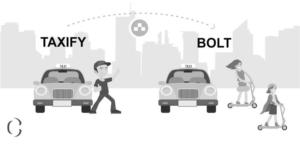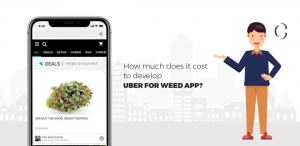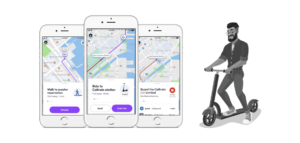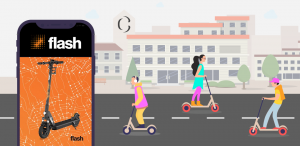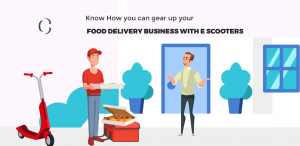4 radical business models of on-demand food delivery business you need to know to triumph the industry with on-demand food delivery app.
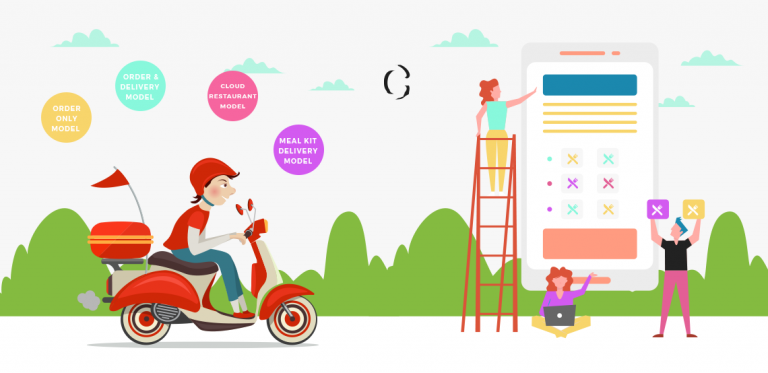
On-demand food delivery industry has nothing to cry over spilled milk. It has been witnessing a constant growth from the time when a man first time ordered a pizza using an online platform in 1994. However, the first proper online food delivery service, Waiter.com was started in 1995. By the late 2000s, all major pizza chains developed their own food delivery platforms, including mobile apps and acquired 20-30% more business. With the increasing number of mobile phones, cutting-edge on-demand food delivery app development techniques and growth of sharing economy, on-demand food delivery startups started blowing own horn. After 2010, a few innovative food delivery companies like Uber Eats, DoorDash, and Foodpanda have been founded and revolutionized food delivery industry. Thanks to their robust apps, online ordering surpassed the phone ordering in 2015.
In 2017, the on-demand food delivery market was valued at $81.56 billion, and according to an estimation, it will hit $161.74 billion by 2023.
Looking at the market opportunities, more and more entrepreneurs are jumping into the on-demand food delivery industry with mobile apps. But it is the deep sea, demands a proper exploration before diving. So, a team of Coruscate Solutions helps you to know all possible ways to start a profitable on-demand food delivery business. We will explore different business models and what are the resources you need for each business model.
4 different business models of on-demand food delivery business you should know while developing on-demand food delivery app(s).
On-demand food delivery industry is the massive industry. Many entrepreneurs and food enthusiasts have gone one extra mile to come up with different self-sustaining business models for on-demand food delivery business. They crafted these business models to reduce resources and to increase revenue.
Following is the 4 different profitable business models for the on-demand food delivery business which you can follow to satisfy the core financial goal from your food delivery startup.
In this type of business model, you let restaurant owners handle the delivery services by themselves. The only responsibility of your on-demand food delivery business is to take the orders from the users and share those orders with the respective restaurants. The restaurant prepares the meal and delivers that meal to the user through its own team of delivery drivers.
Resources
Order only business model for your on-demand food delivery business urges very limited resources. You only need a team which takes care of the value proposition and customer service of your business.
IT infrastructure
IT infrastructure which contains apps for different stakeholders and admin panel holds the same importance in any kind of business model. However, with the different business models, the features an on-demand food delivery app development company integrates into the app may vary. Coruscate Solutions is one of the top mobile app development companies which has earned the expertise to work on any kind of business model and deploy a scalable and reliable IT infrastructure for your on-demand food delivery business.
Talking about order only business model, a user mobile app, restaurant app, and an admin panel together build the whole IT infrastructure. The mobile app lets the users order, restaurant app lets the restaurant owner process the order and admin panel lets the admin get insight into historical and current data of orders.
Following table shows which are the features, you should ask an on-demand food delivery app development company to add.

Limitation
As you are relying on restaurants to provide the delivery services, only those restaurants with the own team of delivery drivers can be listed out on your platform.
Following order only business model means you don’t have control over delivery teams and so, you can’t promise to offer most-excellent delivery service to the users.
An Order and delivery model takes the only delivery model to the next level. If you decide to follow the order and delivery model, you have to handle the logistics for the restaurants. Since restaurants don’t have to invest for delivery service and food delivery companies can create more revenue streams by letting restaurants to utilize its delivery service, order and delivery model is beneficial for both. Top on-demand food delivery service provider companies like Uber, Zomato, DoorDash are following this model. They allow anyone to be the delivery driver by just registering. Now, when a user orders the food, a nearby driver is also notified to pick up and deliver the food. Food delivery companies pay these drivers based on the distance they travel to complete a delivery.
Resources
Unlike order only business model, you will need more resources to operate the order and delivery based food delivery business. You need to be equipped with the team of drivers, customer executives for users, drivers and restaurants, and, of course, three different apps for major three stakeholders. However, it is an undeniable fact that more resources help you to earn more money if you utilize it in a good way!
IT infrastructure
Order and delivery business model is the fully integrated model. You need three different apps for three different major stakeholders – users, restaurant owners, and delivery drivers. If on-demand food delivery app development company puts any of the requirements on the knife-edge and delivers an app with a few missing features, you will not able to dominate the market. So, always be extra conscious when following a fully integrated model.

Limitation:
Arranging an efficient delivery system is the major challenge in the order and delivery model. However, a point to point delivery network can overcome this challenge. In point to point delivery network, an on-demand food delivery app development company writes and implements an algorithm in such a way that system assigns an order to the driver closest to the restaurant.
Order and delivery model is the most common business model on-demand food delivery companies are following to generate more revenue. Coruscate Solutions has entertained 100+ queries related to developing Uber Eats, Zomato and DoorDash like apps.
In the next section of this blog, we will discuss more two business models. These business models are avant-garde and more commercially successful.
Cloud restaurant is the most efficient way of running the on-demand food delivery business. With this model, you can start on-demand food delivery business even from your house as it doesn’t require a proper restaurant to fulfill the need for dining services. When a user orders the food, a central kitchen prepares the food and an own team of delivery drivers delivers the food. It eliminates the need for real-estate. In recent time, many on-demand food delivery companies which are following cloud kitchen model raised a good amount of money in their funding rounds.
Resources
Compared to order only and order and delivery business model, cloud restaurant model needs fewer resources. The major advantage of the cloud kitchen model is that all resources of your on-demand food delivery business will remain only under your control. So, you can utilize it according to business needs.
IT infrastructure
Unlike the other two business models, here admin himself is the owner of the cloud restaurant who owns a team of chefs and delivery drivers. Thus, an on-demand food delivery app development company integrates all admin features into the app of restaurant owner itself.

Limitation
Since you are running an online restaurant without having any kind of physical presence in the market, customers may take time to adapt your services in some locality.
Advantages
You will need very fewer resources. In fact, you can run on-demand delivery business anonymously.
You can personalize all core services according to your need as you own menu, chefs and delivery drivers.
Meal kit delivery model is the very unusual but profitable business model of the on-demand food delivery industry. In this business model, you deliver high-quality ingredients to the customers. Customers can select a veggie plan, family plan, and non-vegetarian plan and number of recipes per week to get delivered the different recipes and ingredients according to their selected plan to prepare those recipes. Top on-demand food delivery companies like HelloFresh and Sunbasket are following this business model.
Resources
You require chefs to prepare different recipes and a team of delivery drivers to deliver the meal kit. Moreover, you also need to have suppliers for different ingredients.
IT infrastructure
Like all other business models of on-demand food delivery business, there are 3 apps you have to ask on-demand food delivery app development company to develop. But the major catch here is related to the features. Since the core business goal of an on-demand food delivery company which is following a meal kit delivery model is different, the developers have to accommodate a few different features in the app.

Limitation
Your user base will remain limited to only those who want to prepare the various types of foods at the home.
Advantage
The revenue per user is very high as the user becomes a subscriber for your service and pays more for weekly service than one-time service.
on-demand food delivery business is a tedious task. So, we, as a leading on-demand food delivery app development company, encourage you to leave the selection of the business model on us. Our dedicated team will understand all your requirements and suggest you the most suitable business model. As if this is not enough, we will develop an on-demand food delivery app which runs parallel with the business model and gives you the sight of always increasing revenue graph. So, feel free to contact us for a free consultation.


